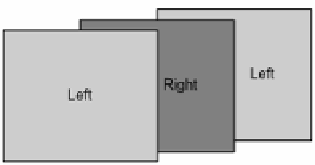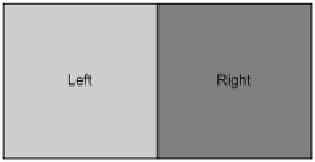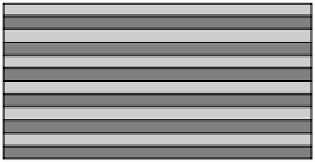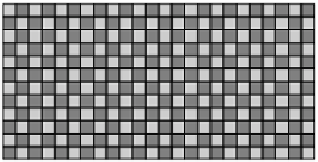Information Technology Reference
In-Depth Information
Fig. 7
Stereoscopic image formats (from left to right, top to bottom): Frame doubling, Side-
by-side, Interleaved and Checkerboard. Image courtesy of NXP Semiconductors.
The checkerboard format mixes pixels of the left and right images so that they
alternate in one row, and alternate the reverse way in the next row. This makes
better interpolation of the missing pixels possible when reconstructing the left and
right images. This representation is used by Texas Instruments DLPs.
The High-Definition Multimedia Interface (HDMI) supports stereoscopic 3D
transmission starting from version 1.4 of the HDMI specification. It defines com-
mon 3D formats and resolutions for supporting 3D up to 1080p resolution and
supports many 3D formats including frame doubling, side-by-side, interleaving
and 2D+depth. There are two mandatory 3D formats defined, which must be sup-
ported by all 3D display devices: 1080p@24Hz and 720p@50/60Hz [27].
2.6 Multi-user Stereo and CAVE Systems
A common extension of stereoscopic projection systems is using them in CAVEs
[28] that use three to six walls (possibly including the floor and ceiling) as stereo-
scopic 3D projection screens. The users entering the CAVE wear glasses for
stereoscopic viewing, one of them (commonly referred to as “leader” or “driver”)
wearing extra equipment for tracking. Since the stereo pairs are generated for a
single point of view that of the driver, using stereoscopic 3D for multiple users is
problematic, as only the driver will perceive a correct 3D image, all others will see
a distorted scene. Whenever the driver moves, the images are updated, thus all
other users will see the scene moving (according to the movement of the driver),
even is they stay at the same place not doing any movements, resulting in disturb-
ing effects. Stereoscopic CAVEs are widely used for providing immersive 3D ex-
perience, but unfortunately carry all the drawbacks of stereoscopic systems.




